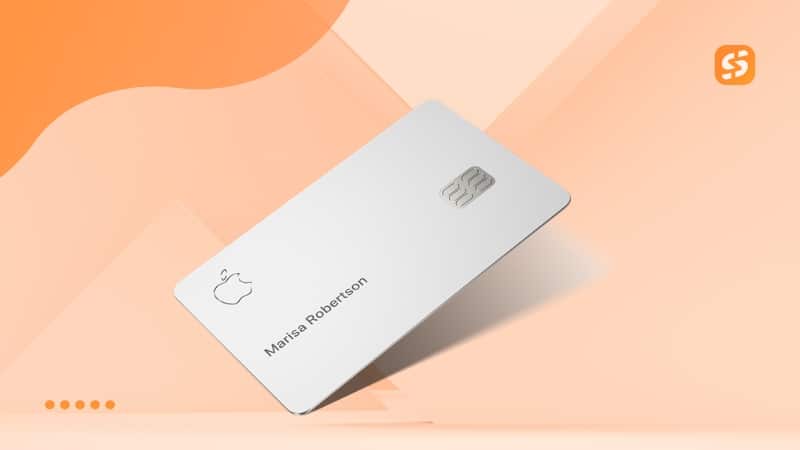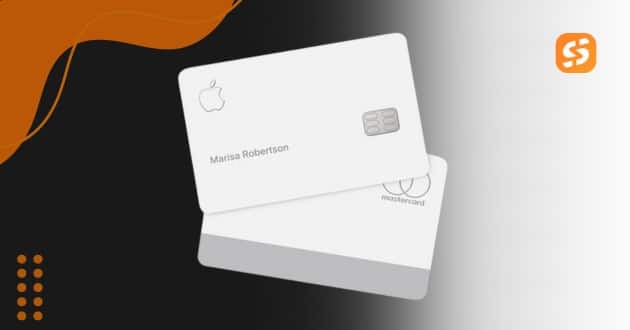Advertisements
The Apple Card issued by Goldman Sachs has completely transformed how Americans think about credit cards. Combining Apple’s minimalist design philosophy with Goldman Sachs’s financial expertise, it offers a seamless, transparent, and tech-driven experience that redefines the relationship between consumers and their finances.
Unlike traditional credit cards, the Apple Card focuses on simplicity, privacy, and control, elements that align perfectly with Apple’s mission to improve users’ daily lives through technology.
From its innovative reward system to its fee-free structure, the Apple Card issued by Goldman Sachs is not just another financial product; it’s a statement of how technology and banking can coexist to make money management smarter and more human.
Advertisements
Throughout this article, we’ll explore how this partnership came to be. Why it matters, and what makes this card stand out in a crowded U.S. credit market.
The Birth of a Modern Credit Card
The Apple Card issued by Goldman Sachs represents a turning point in the history of credit cards in the United States. Created from Apple’s desire to simplify and modernize personal finance, it blends cutting-edge technology with financial reliability.
We selected other credit card options that match your profile:
By partnering with Goldman Sachs, Apple introduced a product that goes beyond payments, it offers transparency, design, and control. Applying is entirely digital through the iPhone’s Wallet app, with instant approval and immediate use via Apple Pay. The titanium physical card, minimalist and secure, reinforces Apple’s focus on elegance and innovation.
Advertisements
This card arrived at a moment when consumers were actively searching for the Best Credit Card Offers in the United States, and Apple seized the opportunity to redefine what a credit experience could be.
With no annual or hidden fees, real-time spending insights, and a simple reward system through Daily Cash, the Apple Card encourages responsible use and helps users understand their financial habits. Its integration with Apple Pay and biometric authentication also ensures safety, convenience, and privacy in every transaction. Qualities that traditional banks have struggled to deliver.
More than just a payment tool, the Apple Card issued by Goldman Sachs symbolizes the future of digital finance. It unites Silicon Valley’s innovation with Wall Street’s expertise, proving that financial services can be both ethical and intuitive.
For users deeply connected to Apple’s ecosystem, it offers unmatched convenience and transparency. Ultimately, this partnership created not just another credit card but a modern financial experience that redefines trust, technology, and the way Americans relate to money.
How the Apple Card Works

Applying for the Apple Card issued by Goldman Sachs is quick and entirely digital. Users can apply directly through the Wallet app on their iPhone and, if approved, start using the card instantly with Apple Pay. The entire process takes only a few minutes and doesn’t involve paperwork or phone calls.
The rewards system, called “Daily Cash,” is one of the card’s biggest attractions. Users receive 3% cash back on purchases made directly from Apple and select partners, 2% on any transaction made with Apple Pay, and 1% on purchases made with the physical titanium card. The cash back is deposited daily into the user’s Apple Cash account, where it can be used, sent to friends, or applied directly to the card balance.
What truly differentiates this card is transparency. Apple and Goldman Sachs removed nearly all traditional credit card fees. There are no annual fees, foreign transaction fees, or over-limit charges. Even late payments don’t trigger additional fees, though interest still applies.
This fee-free model reinforces Apple’s branding as a customer-first company and challenges other banks to rethink how they profit from credit products. The Wallet app also includes smart financial tools that help users track spending and understand their financial behavior.
Purchases are automatically categorized and color-coded, showing where the money goes each month. Users can also preview how much interest they’ll pay if they don’t pay off the full balance. A clear push toward more responsible financial habits.
Why Consumers Love It
The Apple Card issued by Goldman Sachs gained quick popularity because it feels like a natural extension of Apple’s ecosystem. For people who already use iPhones, iPads, and Apple Watches, the integration is flawless. All purchases, rewards, and statements appear in real time, and paying the bill is as simple as a few taps.
Another reason for its success is the immediate gratification of “Daily Cash.” Instead of waiting weeks for cashback rewards to post, Apple gives users access to their earned money the very next day. This fast feedback loop not only feels rewarding but also encourages responsible use of the card.
Security and privacy are also core pillars of the Apple Card. Each transaction is authorized with Face ID or Touch ID, and the physical card doesn’t display any numbers. Not even the card number, CVV, or expiration date. These details are stored securely within the Wallet app. This makes the card nearly impossible to clone or misuse if it’s lost or stolen.
The titanium physical card adds another layer of prestige. Minimalist, sleek, and laser-engraved with only the cardholder’s name, it perfectly embodies Apple’s design ethos. It’s not just a payment tool; it’s a status symbol that fits neatly into the brand’s lifestyle narrative.
Challenges Behind the Success
Despite its innovation and appeal, the Apple Card issued by Goldman Sachs hasn’t been without controversy. Early on, some users alleged that the credit approval algorithm was biased, sparking regulatory investigations. Although Goldman Sachs denied any wrongdoing, the episode highlighted the growing scrutiny around AI-driven credit decisions.
On the business side, Goldman Sachs reportedly faced difficulties maintaining profitability in its consumer-lending division. Managing credit risk, regulatory compliance, and customer service for millions of retail clients is a massive shift from its traditional institutional model.
There have been reports suggesting Goldman might step back from the partnership or even transfer the card’s management to another bank in the future.
Still, these operational challenges haven’t affected users directly. The card continues to function normally, and Apple remains committed to improving its financial ecosystem.
Who Benefits the Most from the Apple Card
The Apple Card issued by Goldman Sachs isn’t meant for everyone, it’s built for a specific kind of user. People who live within the Apple ecosystem benefit most. If you frequently use Apple Pay, buy Apple products, and value design simplicity, this card fits seamlessly into your lifestyle.
It’s also ideal for users who appreciate transparency and control. The Wallet app’s real-time updates make it easier to track spending and avoid surprises. In contrast, traditional credit cards often rely on monthly statements, making it easy for users to lose sight of their daily habits.
However, if your goal is to maximize travel rewards or earn points for premium perks like airport lounges or hotel upgrades. Other cards may offer more competitive options. The Apple Card focuses on everyday spending and simplicity rather than luxury benefits.
Conclusion
The Apple Card issued by Goldman Sachs redefines what a credit card can be in the digital age. By merging Apple’s design excellence with Goldman Sachs’s financial structure, it delivers a seamless and transparent experience for users. Unlike traditional cards filled with hidden fees and complex terms, the Apple Card offers instant approval, real-time spending insights, and a fee-free model that encourages responsible financial management.
Its integration with the Wallet app allows users to see every transaction, understand interest charges, and enjoy immediate rewards through Daily Cash. All within a clean, intuitive interface.
Beyond functionality, the Apple Card represents a shift in how technology influences finance. It proves that digital banking can be both simple and secure, thanks to features like biometric authentication. Smart budgeting tools, and privacy-first engineering.
This innovation pushed the entire U.S. credit industry toward modernization, inspiring other banks and fintechs to prioritize clarity, user experience, and ethical practices. It also appeals to consumers seeking convenience without sacrificing transparency, offering one of the Best Credit Card Offers in the United States for those within the Apple ecosystem.
Ultimately, the Apple Card issued by Goldman Sachs is more than a payment method. It’s a symbol of trust, innovation, and empowerment. It transforms the traditional credit relationship into something dynamic, educational, and user-focused.
For anyone interested in exploring its official features or applying, Apple provides detailed information on its official Apple Card page. This partnership has not only changed how people use credit but has also set a lasting standard for the future of digital finance.
Other cards worth checking:
See other cards with similar benefits to what you’re viewing.



















